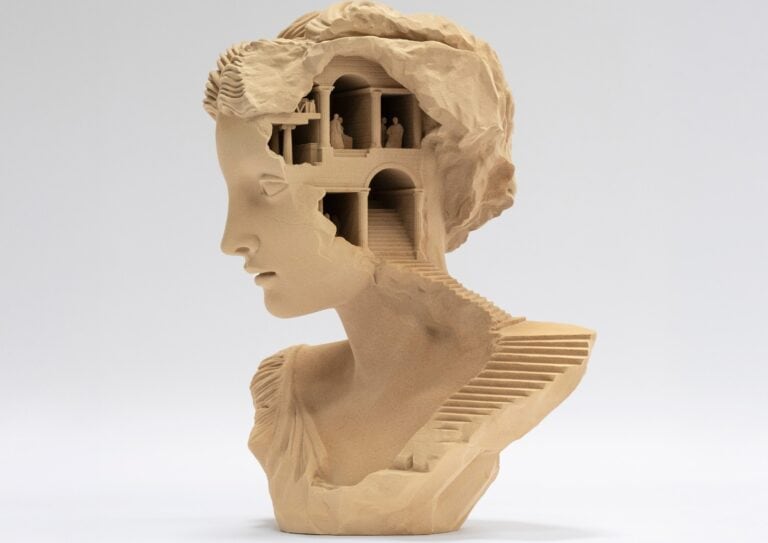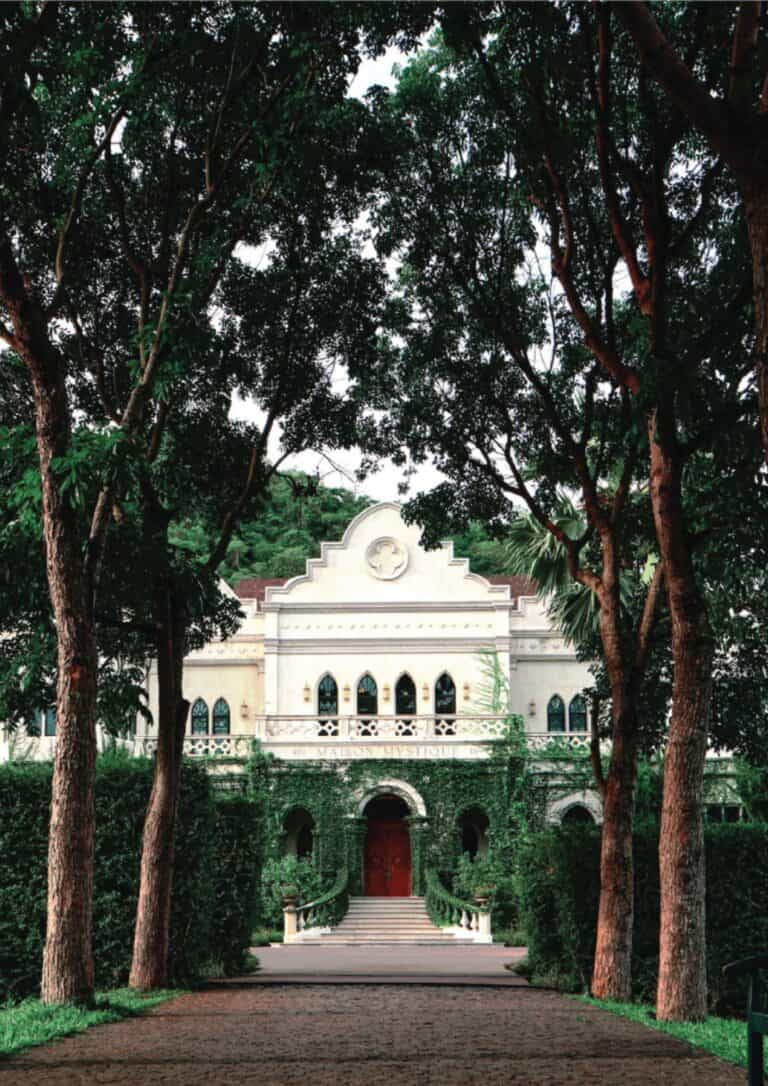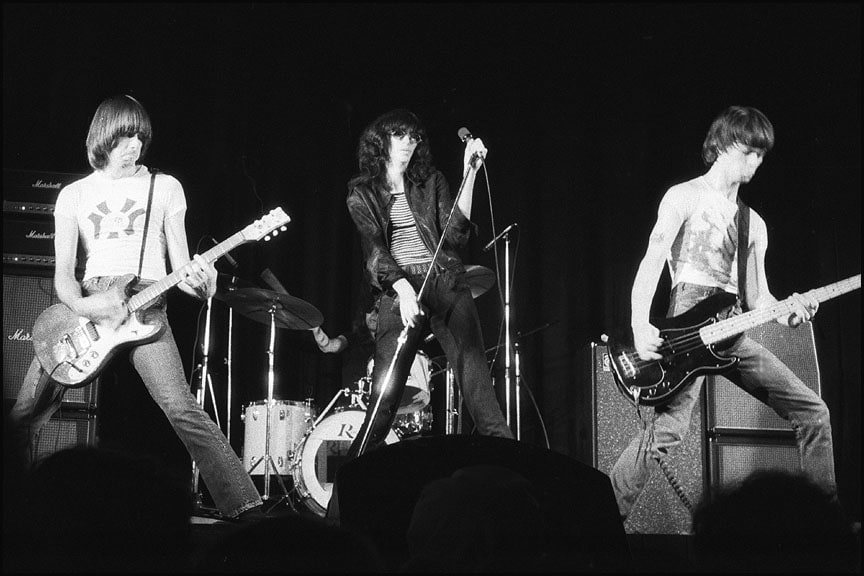
The Ghost of Punk Still Roams the East Village
Mylea Braun
Once the gritty playground of punk rock, the East Village is now better known for $8 matcha lattes than mosh pits. Yet, The Ghosts of Punk Still Roam the East Village, reminding us of its iconic past. In the 1970s, clubs like CBGB turned this New York neighborhood into the epicenter of a cultural revolution. The Ramones snarled through sets, Patti Smith read poetry in dive bars and shag haircuts were born on St. Mark’s Place.
Five decades later, rents have soared, chain stores have crept in and the East Village’s punk soul seems to be fading. Still, if you know where to look, you’ll find the ghosts of punk beneath the surface of this trendy zip code.
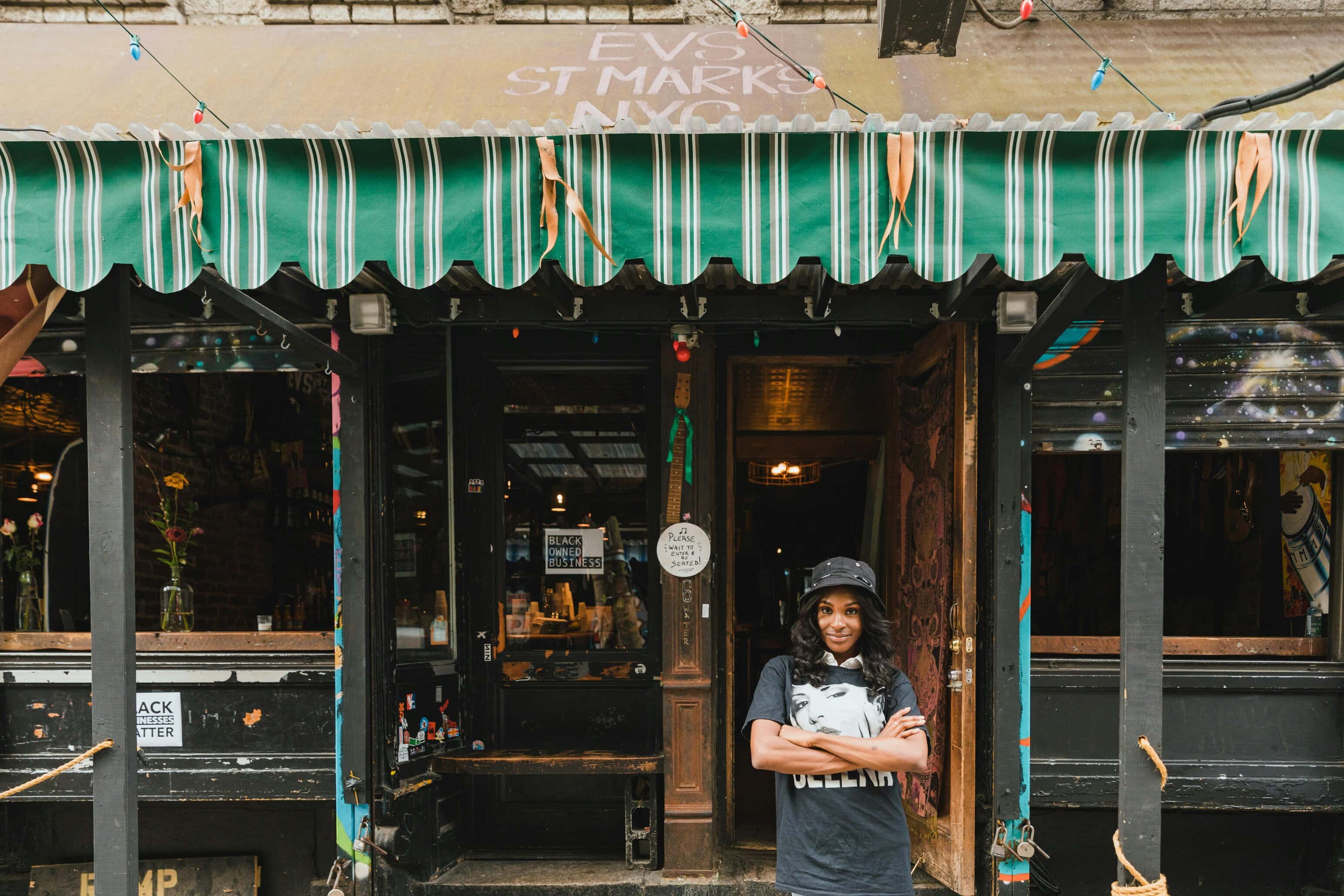
The Birth of Punk in the East Village
In the 1970s, the East Village became the center of punk rock culture in the US. The legendary CBGB club on the Bowery introduced the world to the Ramones, Patti Smith, Blondie, Television, and Talking Heads. Ironically, CBGB short for Country, Bluegrass and Blues was never intended as a punk venue. When founder Hilly Kristal opened it in 1973, he envisioned showcasing American roots music.
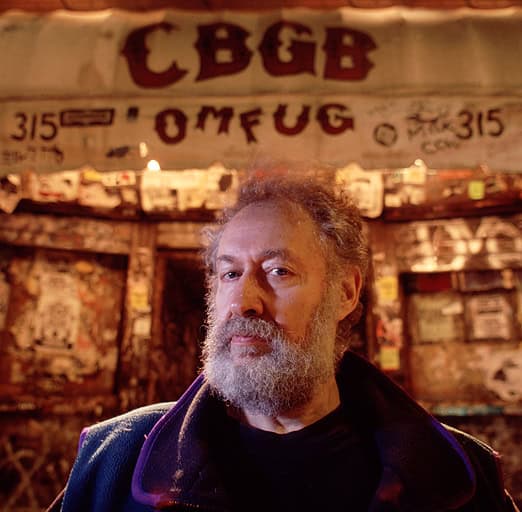
Instead, the venue became a haven for misfits and rebels. Its grimy walls, broken toilets, and raw sound system were part of its DIY charm. CBGB wasn’t about polish; it was about possibility. Throughout the ’70s and ’80s, it served as the beating heart of the punk East Village scene and today, the ghosts of punk still echo through stories told by those who stood in the crowd.
But by the early 2000s, the neighborhood’s rising rents threatened its survival. After a rent dispute, CBGB closed in 2006. Patti Smith played the final show. Today, a John Varvatos boutique stands in its place selling $300 jackets on the same floor where punk was born.
Punk Displacement: Gentrification in the East Village
Of course, punk wasn’t the only thing pushed out of the East Village. Gentrification isn’t new here, it’s been unfolding for decades. Since the 1990s, a steady stream of rezoning, rising rents, and luxury developments has transformed New York’s once working-class neighborhoods. These areas are now playgrounds for the wealthy. The East Village, once a haven for artists, immigrants and outcasts, became prime real estate. Writer and preservationist Jeremiah Moss chronicled this transformation in his blog Vanishing New York, which, though not as frequently updated today, remains a powerful archive of what’s been lost. His work documents the slow erasure of local landmarks, community hubs, and cultural grit beneath waves of glass condos and artisanal everything.
The neighbourhood’s identity now wears a slick, repackaged look. Marketers have transformed rebellion into branding. They’ve aestheticized punk and sell it in curated “vintage” shops at boutique prices. The East Village’s grit has become a vibe, marketed to newcomers who want edge without the risk. In the process, the soul of the neighbourhood the real, messy, untamed spirit, feels more like a memory than a presence.
Punk Still Lives in the East Village, If You Know Where to Look
Punk hasn’t disappeared, it’s just turned down the volume, gritted its teeth, and maybe picked up a second job to cover rent.
Trash and Vaudeville
Opened in 1976, Trash and Vaudeville became the go-to shop for rock stars like the Ramones and Debbie Harry. Originally located at 4 St. Mark’s Place, it moved to East 7th Street in 2016. Despite the move, it has lost none of its edge.
Founded by Ray Goodman, a local with deep ties to the scene, Trash and Vaudeville offers punk staples, leather, spikes, denim, platforms and continues to draw punks, musicians and misfits. The shop is a time capsule of when style was loud and rebellion was in fashion.
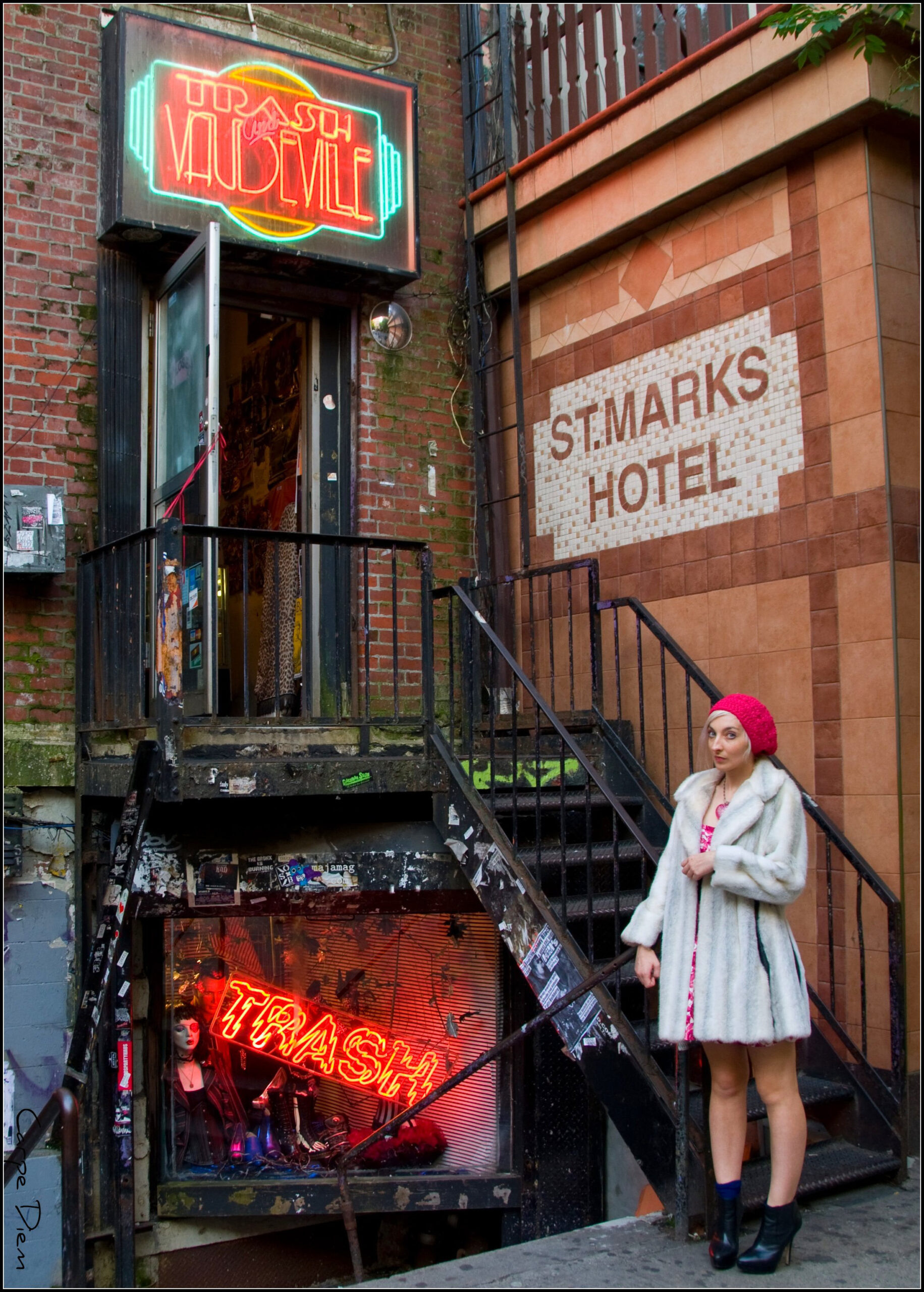
Search and Destroy
Another punk cornerstone is Search and Destroy, the last truly unruly shop left on St. Mark’s Place. Since 1982, it’s been more than just a secondhand store, it’s a full on sensory jolt. Inside, you’ll find racks of ripped jeans, plaid skirts and band tees surrounded by surreal decor: toy babies, mannequins, and the kind of props that would make your grandma blush. While the East Village has traded in most of its grit for polish, Search and Destroy still buzzes with that original punk defiance. It’s also one of the last vintage shops on the block. This serves as a reminder of when St. Mark’s was a hub for weirdness, rebellion, and style you couldn’t find in a mall. Even if you’re not buying, hanging around its steps still feels like being part of something raw, real, and a little off the rails.
Tompkins Square Park
Tompkins Square Park has always been more than just a patch of grass. It was punk’s public stage and battleground. In the late ’70s and ’80s, the park pulsed with raw energy. The concrete bandshell, built in the ’60s, became an unofficial venue for underground shows, spontaneous performances and political protests. Its sidewalks echoed with shouting voices, distorted guitars, and the stomp of combat boots.
But Tompkins wasn’t just a playground it was a powder keg. Fights broke out between punks, police, and other groups over territory, noise, and lifestyle clashes. The tension exploded during the 1991 Memorial Day Riot, when a police crackdown turned violent. This incident captured the uneasy relationship between punk culture and authority. Today, the chaos has quieted, but if you look closely, you can still see traces of that era. The engravings in benches, worn corners of the bandshell and ghosts of loud nights past hint at a time when the park wasn’t just a place to hang out. It was the heart of something defiant.
Conclusion
The Ghost of Punk Still Roams the East Village. Not just in memory, but in the concrete, the storefronts and the stories passed down. On a recent Saturday, I walked down St. Mark’s Place with my aunt, whose grandparents lived on the block in the 1920s. My uncle came too, pointing out the bars he used to visit with my father in the 1980s. For them, the street holds layers of memory, family roots, dive nights and now, storefronts dressed in curated edge.
Neighborhoods shift. Some say they evolve, others say they disappear. In the East Village, it feels like a little of both. The loudest voices have quieted, the chaos has been swept off the sidewalk but the attitude lingers.
You can still find the Ghost of Punk in the scratched concrete of Tompkins Square Park. It’s also present in the racks at Trash and Vaudeville and the cluttered energy of Search and Destroy.
Maybe the East Village isn’t dead, it’s just wearing a new jacket.
Cover image credit:
Ramones in concert at the New Yorker Theater, 1976 by Plismo, via Wikimedia licensed under CC BY-SA 3.0
Share this post
Mylea’s first memories are of a camera — being in family photos and capturing the moment. Ever since then, she has been a creative in any format she can get her hands on. Photographs, drawing, writing, mixed media — she loves it all.
Based in New York, Mylea is now a freelance photographer and marketing specialist. She earned her bachelor’s degree in Photography and Related Media from the Fashion Institute of Technology.
Read Next

